What’s a black hole? What will a larger aperture telescope get you? This is the place to come for answers to almost every astronomy question you can think of — and many you haven’t.
Science-Based Q&A
Deepen your knowledge of astronomy as a science as you browse these Q&As and learn about the universe’s fascinating array of celestial bodies, from planets to stars to black holes. Discover the difference (and evidence for) dark energy and dark matter, and learn about worlds closer to home such as Venus and Saturn.
Solar System

Sun
Planets
- How many planets are in our solar system?
- What are the smallest and largest planets in our solar system?
- Why do the outer, gas-giant planets rotate faster than the inner, terrestrial planets?
- Will all eight planets ever line up on the same side of the Sun?
- Is there any other planet besides Earth whose moon(s) would fit perfectly over the Sun?
- What happened to the “spokes” in Saturn’s rings?
- If you lived on Saturn, would its rings be visible from the equator or the poles?
- What determines a moon’s atmosphere? (Why is Titan’s so dense?)
Comets, Asteroids & Meteors
- What is a comet? Where do comets come from?
- What are asteroids and where do they come from?
- What is a meteor shower?
- Why do comets have tails?
- Why are comets and asteroids discovered when they are farthest from the Sun?
- How large an asteroid could a person jump off?
- How much space debris falls into Earth's atmosphere every year?
- If asteroid 99942 Apophis ever strikes Earth, how big would the crater be?
- Will asteroid 99942 Apophis eclipse the Moon when it passes by?
Cosmology
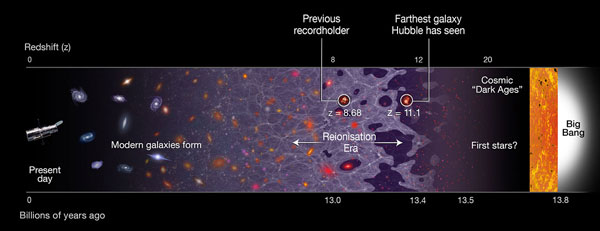
NASA / ESA / B. Robertson / A. Feild
- How did the universe begin? What happened during the Big Bang?
- What came before the Big Bang?
- Where was the Big Bang located?
- Is there a center of the universe?
- Is space flat or curved?
- How do we measure a galaxy’s distance?
- What is dark matter?
- What is dark energy?
- How fast is the universe expanding?
- Is the universe infinite?
- What is the age of the universe?
- The end of the universe: What is our ultimate fate?
Galaxies
Milky Way
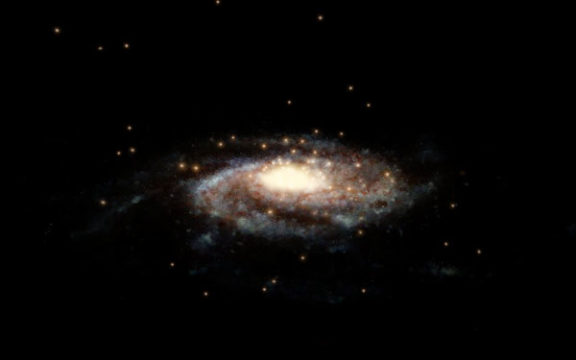
ESA / Hubble, NASA / L. Calçada
- How many stars are in the Milky Way?
- What percentage of our galaxy’s stars move in retrograde orbits?
Black Holes
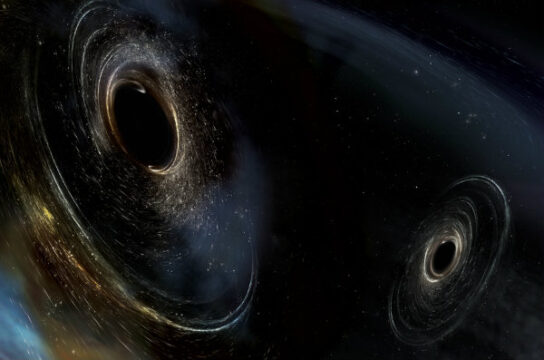
LIGO / Caltech / MIT / Aurore Simonnet (Sonoma State)
- What is a black hole?
- What is a quasar?
- What's inside a black hole?
- Are black holes real? If so, who discovered them?
- How big is a black hole?
- How do black holes form?
- How does time change inside a black hole?
- What would happen if I fed antimatter into a black hole?
- What’s the density of a black hole?
- More black hole facts
Stars
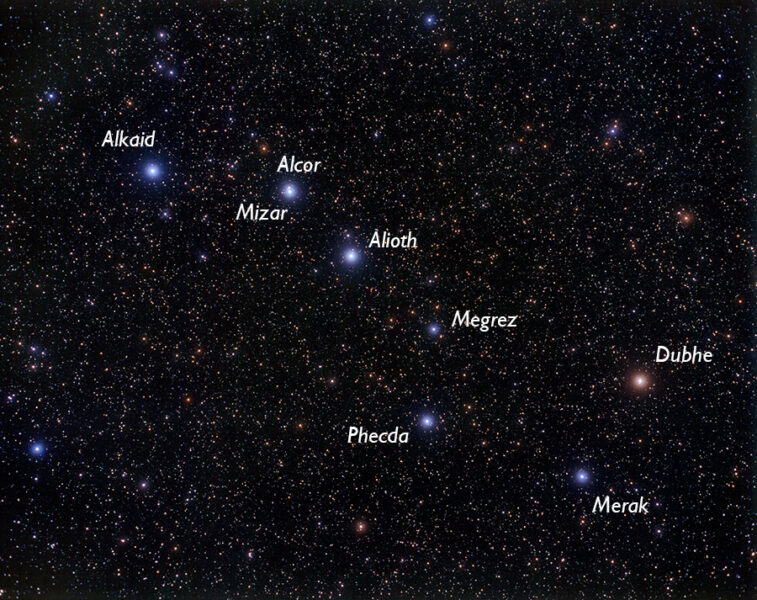
Akira Fujii
- What is a star?
- Why do stars twinkle?
- Why are the stars so far away?
- How far is the closest star?
- What is the brightest star in the sky?
- What are constellations?
- How can we find the Sun’s place among the constellations?
- What’s the distance to Polaris?
- How can binary stars orbit each other so fast?
- How long do stars live? How do stars die?
- How many stars are there in the universe?
- Why are there no green stars?
- How do astronomers accurately determine wobbles in a star's motion?
- If you combine the magnitudes of all visible stars, how bright a star will you come up with?
By Wavelength
Astronomy & Society
- Astrology vs Astronomy: What’s the difference?
- How is the date of Easter determined?
- How did early astronomers calculate accurate solar system positions?
The Kavli Foundation Q&As
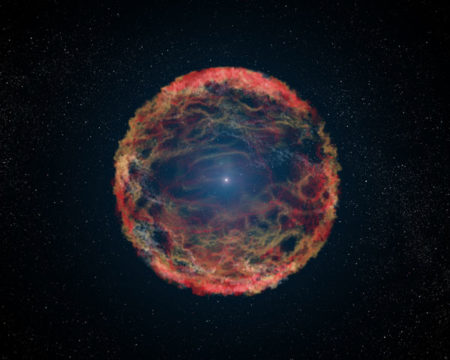
NASA / ESA / G. Bacon (STScI)
- A “Living Dead” Star Sheds Light on the Early Universe
- A New Map of Dark Matter?
- What’s Life Like at the Remotest Telescopes?
- Do Globular Clusters Generate Black Holes?
- How Did the First Quasars Form?
- How Do Galaxies Die?
- How are Gravitational Waves Detected?
- How Did Nature's Heaviest Elements Form?
- How Do Planets Form?
- How Will Gravitational Waves Reveal a Hidden Universe?
- How Do Citizen Scientists Drive Discovery?
- Pluto Revealed - The Historic Voyage of New Horizons
- What Ignites Supernova Explosions?
- Dwarf Galaxies and the Quest for Dark Matter
- Insights Into Cosmic Inflation
- What Has Planck Taught Us About the Early Universe?
- Dark Matter at Long Last? Three New Experiments Ramp Up
- Understanding the Fermi Bubbles
- The Large Synoptic Survey Telescope
- Microbes and the Search for Extraterrestrial Life
Hobby-Based Q&A
Delve into the hobby of astronomy: learn about different types of equipment and what they can do, and discover the limits (read: challenges) of observing the night sky with instruments and the unaided eye. The Q&As presented here cover a wide range of readers' questions, and we’ve responded with detailed and well-researched answers. Search for a specific question or just browse through — our readers have come up with some interesting hypotheticals over the years!
If there’s a question that hasn’t been asked, ask it yourself by sending a note to [email protected].
General Observing
- What’s my naked-eye magnitude limit?
- Should I wear eyeglasses while observing?
- What happens at star parties?
- How do you pronounce “Vega” and “Canis Major”?
- What was that flashing light in the sky?
- What is the faintest object imaged by ground-based telescopes?
Observing the Sun
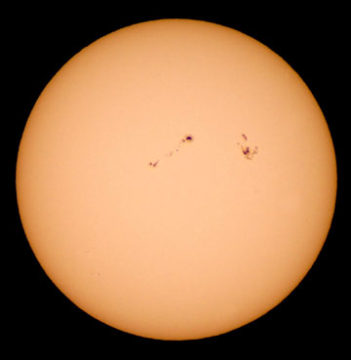
- 4 FAQs about the next solar eclipse
- How can you determine a sunspot’s size compared to that of Earth?
- What is a sundog, and how did “sundogs” get their name?
- When is the earliest sunrise of the year?
- How many daylight hours do you get in a year?
- Does the Sun always rise in the east?
Observing the Moon
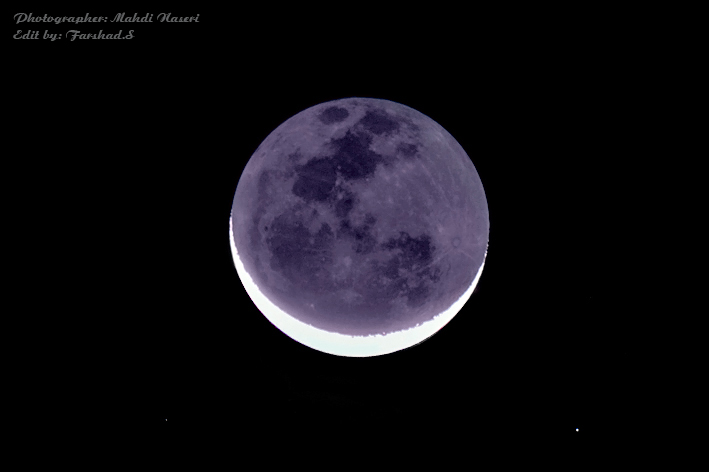
- What are the phases of the Moon?
- Why does the Moon rise later every night?
- How is the time of new (or full) Moon defined?
- Is it possible to have no full Moon in February during a leap year?
- When’s the next blue Moon?
- Would a perfectly reflecting full Moon be just as bright as the Sun?
- Could the lunar crescent be seen in a telescope at new Moon?
- How does the Moon’s phase affect the skyglow of any given location?
- Could I see astronauts on the Moon?
Observing Satellites
Observing the Planets
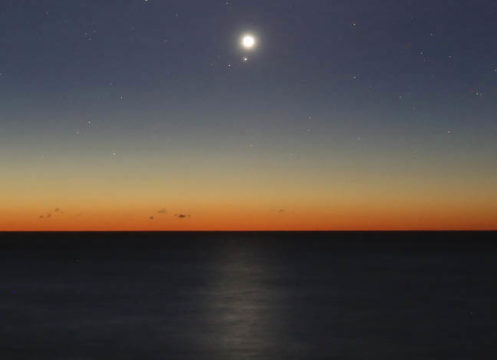
Bob King
- Is it possible to see the crescent of Venus?
- Can Venus ever be far enough from the Sun to appear east of the meridian?
- Will we ever see a mirror image of the conjunction of Venus and crescent Moon, as depicted on the Turkish flag?
- Will Mercury and Venus ever transit the Sun simultaneously?
- Why do photos of lunar or Martian craters sometimes appear inside-out?
- Is it possible to detect Jupiter’s satellites with the unaided eye?
- Do Saturn’s moons cast observable shadows?
- What defines a planet’s north pole?
Observing Comets, Asteroids & Meteors

Shakeel Anwar / Online Photo Gallery
- Does a comet's tail tell us what direction it's heading?
- Will it ever be possible to observe Halley’s Comet around its entire orbit?
- How can amateurs find asteroids?
- What’s the phase of the Moon during next year’s Perseid meteor shower?
- How well defined is a meteor shower’s radiant?
Observing Stars
- Were stars artistically depicted with diffraction spikes before the invention of the Newtonian reflector?
- If stars appear as points, why are some stars big and some small in different images?
- Where can I find double star SAO numbers for my Go To telescope?
- On what date were the two principal stars of the Alpha Centauri system last known to be closest to each other?
Astrophotography
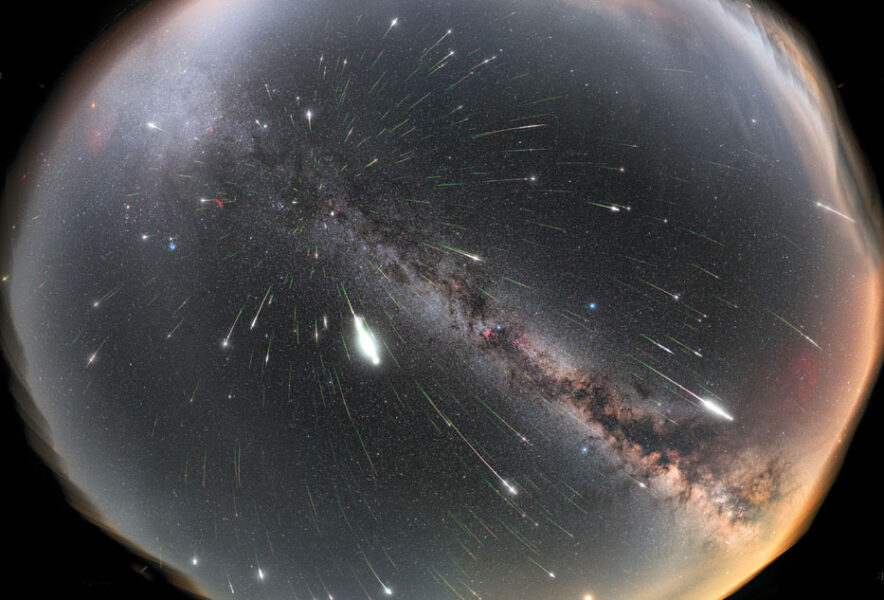
- Should you set your digital camera to a low or high ISO value in twilight?
- Can you get sharper images by stopping down your scope with a cardboard mask?
- Why do people doing CCD imaging often stack five 1-minute exposures instead of taking just one 5-minute exposure?
- How can an astrophoto shot through a refractor have diffraction spikes on bright stars?
- Is obstruction of less consequence for photography than for visual observing?
- What does “true color” mean in a deep-space photograph?
Astronomy Equipment

Telescopes
- Focal ratio vs. aperture: which makes an object look brighter through a telescope?
- Can a telescope increase an object’s surface brightness?
- How far away are the stars I see through my telescope?
- What's the most distant object I can see with my telescope?
- Is there a good test for optical quality?
- How can I see more colors through my telescope?
- How can I prevent my finder from dewing over?
- How can I polar align in the daytime?
- What should I do if my telescope mirror is dusty?
- How will I know when my telescope mirrors need re-aluminizing?
- Would a large concave mirror suffice for low-power views of extended deep-sky objects?
- How can I get my German equatorial mount to hold its tilt?
- Why do Schmidt-Cassegrain telescopes have focal ratios of f/10?
- Can you adjust a spherical mirror to act like a parabolidal mirror by racking the focus farther out?
- What does "lignes" mean for the aperture of an antique telescope?
Amateur Telescope-Making
- Will I save money by making my own telescope?
- Are machine-made telescope mirrors better than those made by hand?
- What size first telescope mirror should I make?
- Is software available to analyze optical designs of telescopes?
Eyepieces / Optics
- How do I clean eyepiece lenses?
- How can eyepieces offer a telescope's widest true field?
- What's the difference between these two Plössl eyepieces?
- Where did the 1 1/4-inch standard size for eyepiece barrels come from?
- Why do the best roof-prism binoculars need a phase-correction coating?
Filters
- What’s the difference between nebula filters and light-pollution filters?
- Why do you need a hydrogen-alpha filter to see solar prominences?
- Can an OIII nebula filter be called “oh-three”?
Miscellany
Questions on Sky & Telescope Articles
- Why are there two peaks in the light curve on page 97 of the October 2005 issue?
- Why doesn’t S&T produce a star atlas with mirror-image charts?
- Can you run programs from past issues of S&T, written in BASIC, on a Windows XP computer?
- Why does S&T use light-years instead of parsecs for astronomical distances?
- What is the unfamiliar star in Johnny Horne’s image of the Horsehead Nebula?
- How can a telescope have an f/ratio of f/42 (re: January 2006 issue)?
Sky Atlas Questions
- Why are the Large and Small Magellanic Clouds not listed among the Caldwell objects?
- When will (or did) the galactic equator cross the ecliptic very close to the latter’s northern and southern extremes?
Math Questions
- How many digits are satisfactory in the measurement of pi?
- What does "error" mean?
- Do error bars have to overlap the line of best fit?
- How do you convert celestial coordinates for equinox 1950.0 to 2000.0?
Really, Really Miscellaneous Questions
- Why aren't Earth's night skies more colorful?
- How could an astronomer living on the far side of the Moon verify Earth existed?
- Did an earthquake alter Earth’s rotation and tilt?
- What is the most distant human-caused event that’s been easily verifiable with ordinary optics?
- Why doesn’t a GPS receiver read longitude 0° 00′ 00″ while standing on the prime meridian at the Greenwich Observatory?
- Can you use a replica of an 18th century New England sundial in Washington?
- What was the cloud spotted near the western horizon August 31, 2004?
